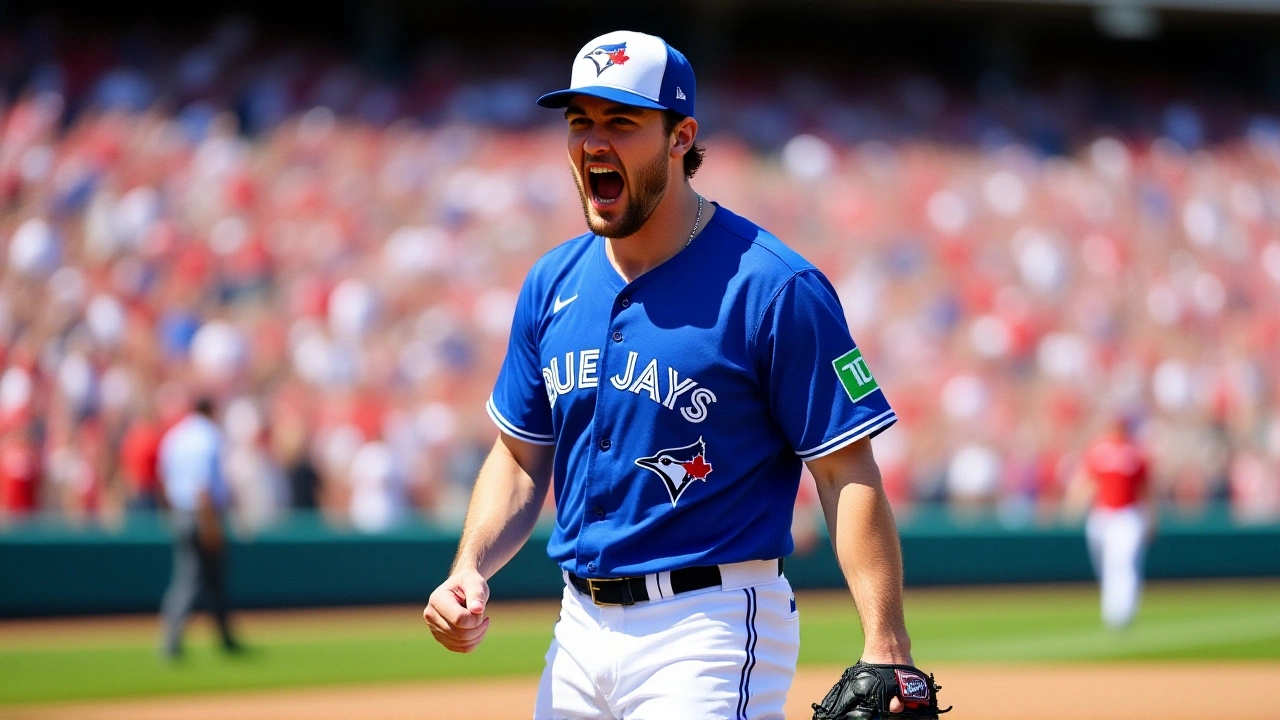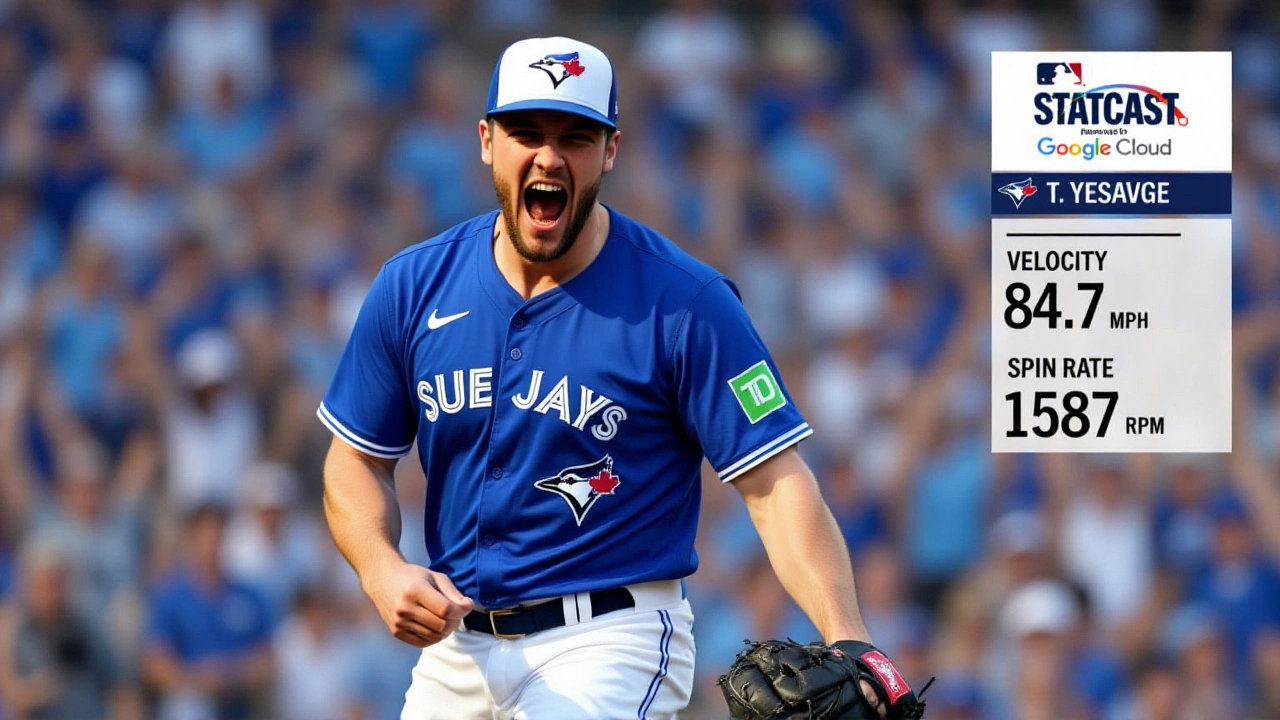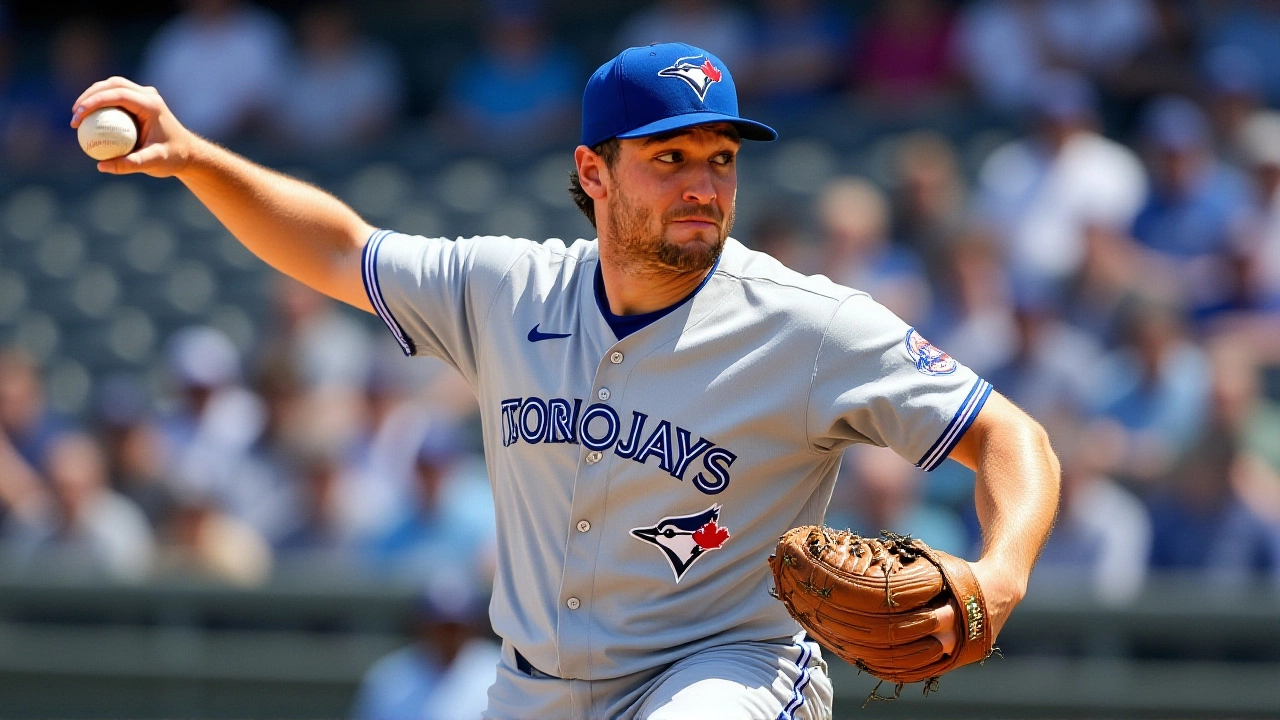
When Trey Yesavage, right‑handed pitcher for the Toronto Blue Jays, took the mound on Sunday, the crowd at the Rogers Centre didn’t know they were about to witness a piece of baseball lore. In Game 2 of the American League Division SeriesToronto, the 22‑year‑old rookie fanned 11 New York Yankees batters over 5 1⁄3 innings of no‑hit baseball, shattering the franchise’s postseason strikeout record.
How the night unfolded
Yesavage’s arsenal was on full display from the first pitch. He melted the Yankees’ line‑up with a sinking fastball and a splitter that seemed to vanish mid‑air. By the end of the third inning, he already had nine strikeouts – a pace usually reserved for seasoned veterans.
The fourth inning delivered the punchline: three consecutive K’s against Aaron Judge, Cody Bellinger and Ben Rice. A quick glance at the scoreboard showed a tidy 10‑K line, tying the record for most strikeouts through four innings in a postseason game, a feat previously shared only by Patrick Corbin in the 2019 NLCS.
He added his 11th K in the fifth before manager John Schneider pulled him after the first out of the sixth. The stadium erupted – a mix of boos from impatient fans and a thunderous ovation from those who just witnessed history.
Stat line that tells the story
- Innings pitched: 5 1⁄3
- Total pitches: 78 (48 strikes)
- Hits allowed: 0
- Walks: 1
- Strikeouts: 11
The numbers read like a textbook example of efficiency. No hits, one walk, and a strike‑out‑per‑ inning rate that would make any scout smile.
Where this performance fits in baseball history
Before Yesavage, the Blue Jays’ postseason high was eight strikeouts, a mark shared by David Price, Juan Guzmán and Dave Stieb. By breaking that barrier, he not only cemented his name in the team’s record books but also joined an elite club of young pitchers. At 22 years and 69 days, he became the second‑youngest pitcher ever to record a double‑digit strikeout game in the postseason; only John Candelaria (21 years, 335 days) has struck out more in a playoff start.
His 10‑K stretch through four innings also matched Corbin’s 2019 record, underscoring how rare such dominance is, especially against a Yankees lineup that led the majors in runs scored during the regular season.

Reactions from the dugout and beyond
“I told the guys I was built for this,” Yesavage said at Saturday’s press conference. After the Game 2 heroics, his words felt prophetic. Schneider, speaking moments after the removal, noted, “We knew we had a gem, but we also had to protect his arm for the long haul.”
Reliever Justin Bruihl took over the sixth and promptly recorded an out before Aaron Judge – the first Yankees batter Yesavage faced after his exit – slipped an infield single, ending the no‑hit bid.
Fans were so enamored that Yesavage received a curtain call, walking back onto the field to a standing ovation. In the locker room, teammates described the night as “a glimpse of what our rotation could look like for years to come.”
What this means for the Blue Jays’ playoff run
The ALDS is now a best‑of‑five series, and the Blue Jays sit up 2‑0. Yesavage’s performance gave the club a psychological edge, showing that even the league’s most feared offense can be shut down.
Analysts at MLB Network suggest the Jays will likely ride Yesavage’s momentum, using him in a swing‑and‑miss role if the series stretches to a decisive Game 5.
For the Yankees, the loss forced a reassessment of their batting approach. Hitting coach Tony DeFrancesco admitted, “We saw a pitcher who could locate his pitches with surgical precision. We need to adjust our timing.”

Key takeaways
- postseason strikeout record broken by a rookie in his debut.
- Yesavage became the second‑youngest pitcher with a double‑digit K game in playoff history.
- The Blue Jays lead the ALDS 2‑0, with a rejuvenated rotation.
- Yankees must adapt to the splitter that baffled them.
- Manager Schneider balances immediate success with long‑term arm health.
Frequently Asked Questions
How does Yesavage’s performance affect his role in the upcoming games?
The Jays are likely to keep Yesavage in the rotation for the rest of the series, but Schneider will monitor his pitch count closely. Expect him to start Game 5 if the series goes the distance, with a bullpen plan ready if his innings limit is reached.
What made Yesavage’s splitter so effective against the Yankees?
His splitter drops dramatically in the last two‑thirds of its trajectory, essentially disappearing from the batter’s eye. Combined with a fastball that sits mid‑90s, the pitch disrupts timing, which is why even power hitters like Aaron Judge struggled.
How does this game compare to other historic rookie postseason outings?
Few rookies have matched a double‑digit K performance in their first playoff start. The most comparable is John Candelaria’s 14‑K game in 1975. Yesavage joins an exclusive group that includes stars like Fernando Valenzuela, though his 11‑K total edges the modern era record for rookies.
What does this mean for the Yankees’ strategy moving forward?
The Yankees will likely avoid early‑count fastballs against pitchers with sharp off‑speed offerings. Expect a more patient approach at the plate, and they may consider a bullpen shift to counter the splitter’s movement.
Could Yesavage’s record influence future Blue Jays pitching decisions?
Yes. Front‑office executives view the performance as proof that the organization’s development pipeline is bearing fruit. It may accelerate plans to give Yesavage a longer leash in the rotation and shape free‑agent targeting toward complementary arms.


